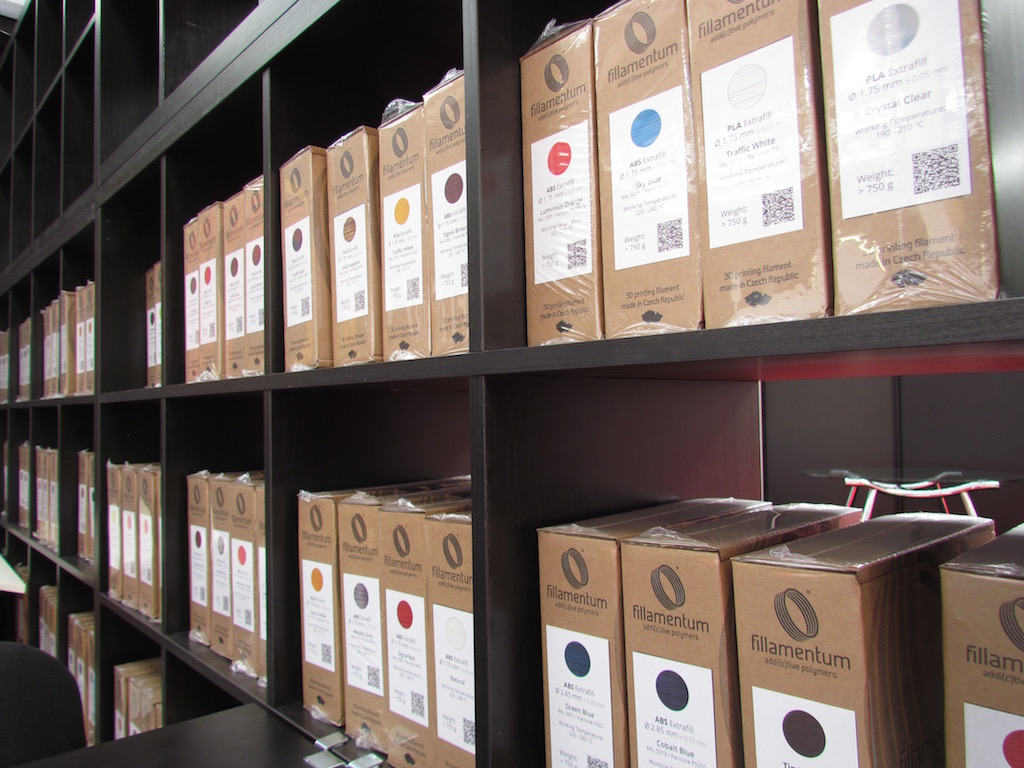
The industry of 3D printing is rapidly growing, and as you’d expect there are a number of different business angles at play. We describe four of them today.
Sure, we know there are plenty of personal 3D printer manufacturers out there, with more arriving every day. It’s highly competitive and that’s not going to change soon. But the industry is more than just selling printers.
Filament
Every 3D printer requires material to print with, and most personal 3D printers these days require plastic filament. The problem with this business is that plastic filament is pretty close to a commodity, after you ensure the basics of quality and safety standards. Numerous new vendors have appeared recently, many who were manufacturers of other plastic products that wish to branch into 3D printing.
The competition is fierce and seems to have evolved into two business strategies: lowest price products vs. exotic products.
There are vendors selling reasonable quality filament at rock bottom prices (example: we saw Foxsmart advertise 1kg PLA filament at only USD$18!) Other vendors, such as ColorFabb, offer exotic or high-performance filaments such as wood, bronze, carbon fiber or other materials at higher prices.
3D Models
Content is required as well as filament to make any 3D printer work. While there are various means of creating 3D models using software, it seems many businesses attempt to sell you pre-made 3D models. There is no shortage of 3D model repositories and more appear frequently. Most have smaller catalogs of materials, and often you’ll see the same items appear as designers simply spread their work around to as many sales channels as possible.
Competition in this area seems to be around two factors: size vs. business model. While some sites strive for the largest number of models and participants, like Shapeways, others develop interesting twists to delivery of 3D models. For example, some offer models in streaming form only to protect designers from losing control over their submitted content. Another interesting approach is 3D Shook, who offer a flat-rate subscription to access 3D models.
Printer Operations
Almost all personal 3D printers require a local PC to either prepare files for printing or drive the attached 3D printer directly. But now several companies are developing cloud-based solutions in which you perform management of your 3D printer from a web page. Your printer is driven from the cloud, which offers several advantages, not the least being the ability to remotely monitor and control your 3D printer.
Each company requires a device of some kind permanently attached to the printer to receive instructions from the cloud and relay them to the 3D printer. Most offer the software for free in hopes of furthering their rapid adoption. One company, Formide, has even open sourced their software to speed things up. Another, 3DPrinterOS, has included a vast array of applications beyond basic 3D printer management, moving towards a world where only the cloud service is required.
Accessories
Another area of increasing attention by 3D printing ventures is that of accessories. There are several types of accessories one might consider for a 3D printer, such as tools or air filters, but most of the action here is centered on methods to ensure adhesion to the printing surface while printing. Some, like PRINTinZ, offer replacement plates for your 3D printer, while others, like BuildTAK, offer sheets you can stick onto your existing print surface. And there’s also those offering liquid solutions one can apply to the print surface. We think there’s a lot of innovation possible in this area yet, and judging by the number of startups providing this type of solution, they agree.
The presence of these competitive business areas demonstrates that personal 3D printing is becoming a vaster ecosystem with sub-industries emerging. While these four may be the most competitive at the moment, it’s quite likely additional areas of business exploration will soon be discovered.

